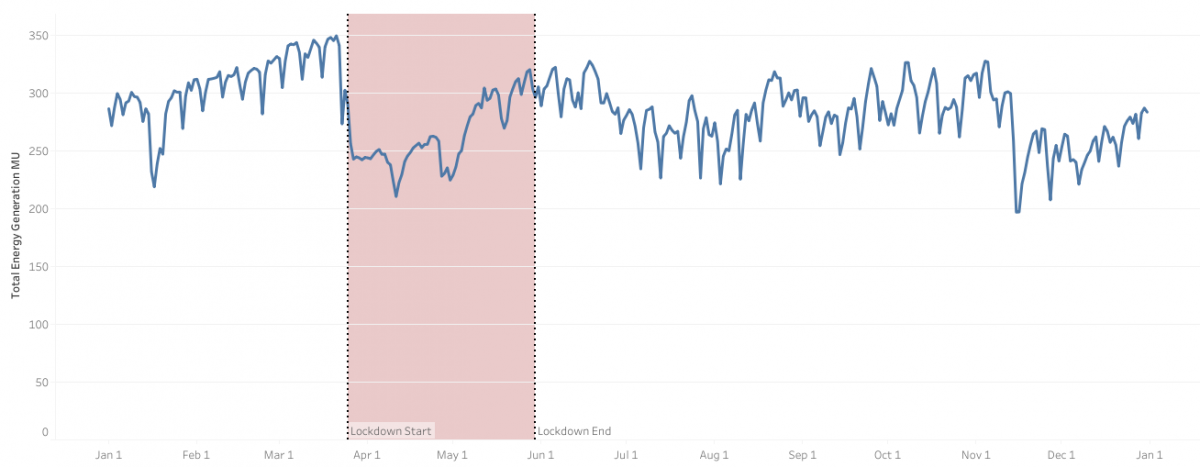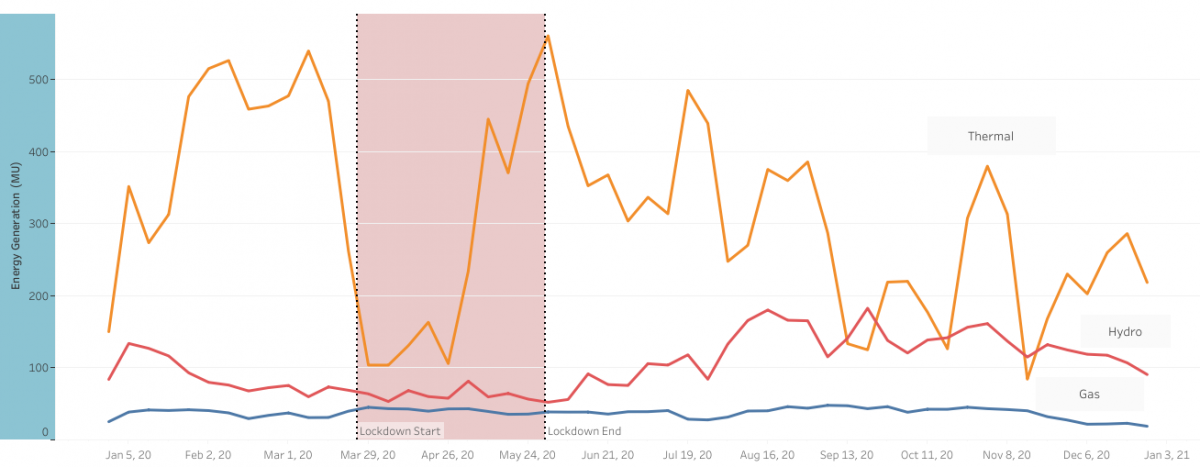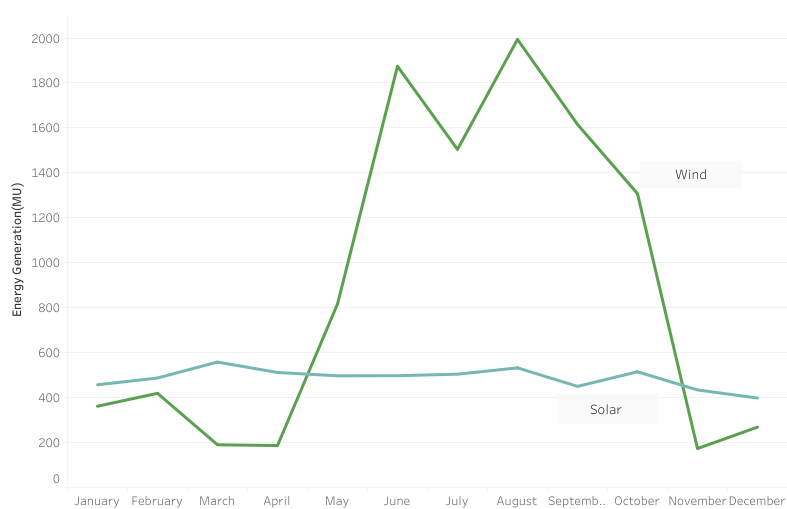Tamil Nadu’s clean energy story during the COVID-19 pandemic
by -
On 25-March-2020, India went into a lockdown of historically unprecedented proportions. The energy sector felt the sting of the lockdown with a year-on-year total power consumption decline of 23.2% in April throughout India.
On 5-April-2020 India held a 9-minute blackout at 9 PM alongside a candle-light vigil to express a collective will to fight the pandemic. This event was a testament to how power operators across the country can manage sharp changes in demand by utilizing various resources, including hydro, gas, thermal flexibly in the country. Among these national stories, electricity consumption patterns in Tamil Nadu paint a fascinating commentary that has gone largely unnoticed.

On 21-March-2020, the power consumption of the Tamil Nadu Generation and Distribution Company Limited (TANGEDCO) stood at 349.9 MU (Figure-1). However, as the Janata curfew set in and the lockdown came into full force, electricity consumption steadily declined to 273.6 MU on 26-March to a low of 210.7 MU on 11-April. This represents a 40% reduction from March to April in 2020.
In Tamil Nadu, the lockdown resulted in the closure of all major industrial units and commercial spaces, which are the primary consumers of electricity. The agriculture sector provided some solace with the onset of the sowing season. The other actual uptick in electricity demand came from the residential sector as people started working from home, and possibly due to increased temperature levels necessitating the use of air conditioners.

Looking at Figure-2, we see that during the lockdown, electricity production from thermal power plants (primarily coal) nosedived. From contributing to around 20% of the state’s energy mix in March-2020, it plummeted to about 5% in April, representing a 4-fold decrease while the state’s overall energy generation decreased from an average of 312.19 MU in March-2020 to 243 MU in April-2020.
Transport restrictions during lockdown impacted the coal supply chain. Further, coal stocks kept piling up drastically at pithead power plants resulting in a higher inventory , which remained unutilized due to limited power consumption. The quality of coal deteriorates the longer it is stored, which impacts the stockpiles of coal adversely. Consequently, during 2019-20, the average coal-fired power plant ran just 55.5% of the time, whereas a decade ago, they were running at an average of 70-80% capacity.
In the long run, unless coal power plants can operate at an expected utilization rate, they run the risk of becoming operationally inefficient. Coal power plants have a high marginal cost of generation compared to renewables (once built), which have near-zero marginal generation costs. As a result, coal power plants must balance their books with high fixed costs against a lower level of production due to long-term legacy power purchase agreements. Further, merit order dispatch rules prioritize low marginal sources. As a result of this, Tamil Nadu saw nearly a 50% increase in generation from solar, wind and hydro sources between March and May 2020.
On the consumer side, while the power requirement from industrial units decreased, electricity demand from residential and agriculture sectors possibly created a need for the state to purchase a disproportionately higher amount from private companies. It also prompted the Central Generating Stations (CGS) to fulfill its demand requirements according to the State Load Dispatch Center (SLDC) reports, as shown in Figure-3.

Renewables to the Rescue
Renewables became a lifeline for Tamil Nadu, and there are some very compelling reasons for it. Inherently, lockdowns did not affect the wind and solar units, as, by design, they are meant to work under minimum onsite supervision. This ensures that the power plants continue to function, even under sub-optimal conditions.
Tamil Nadu’s wind generation season is from May through August. As the output from thermal power plants dropped, wind energy production increased and alleviated the energy situation. Tamil Nadu’s wind plants remained a steady source of power and acted as a critical fallback option. Wind energy rose from 5% in January-February to a peak of 38% on 8-August-2020. Solar generation was a more consistent source of clean energy in the state in 2020, with a long season of January to September producing 1200–1400 MU (See Figure-4).
A staggering 80% increase (from 2500 MU in 2017 to 4500 MU in 2020) in Tamil Nadu’s solar power output is a testament to the state and central government’s aggressive investments and solar targets. In the future, offshore wind farms, relatively immune to seasonal trends, although in a nascent research stage, can be considered as a viable renewable source to support the state, especially when externalities impact coal transport, provided its social and environmental concerns are addressed.

The COVID-19 lockdown has provided a strong impetus to the renewable energy industry. In September 2020 renewables made up for 47% of Tamil Nadu’s energy mix. This lockdown might have held a mirror to many of our problems but has also shown some very encouraging solutions to tackle them. Renewable energy sources have shown its true potential when it was absolutely needed for Tamil Nadu and has established itself as the primary fuel of the future.


